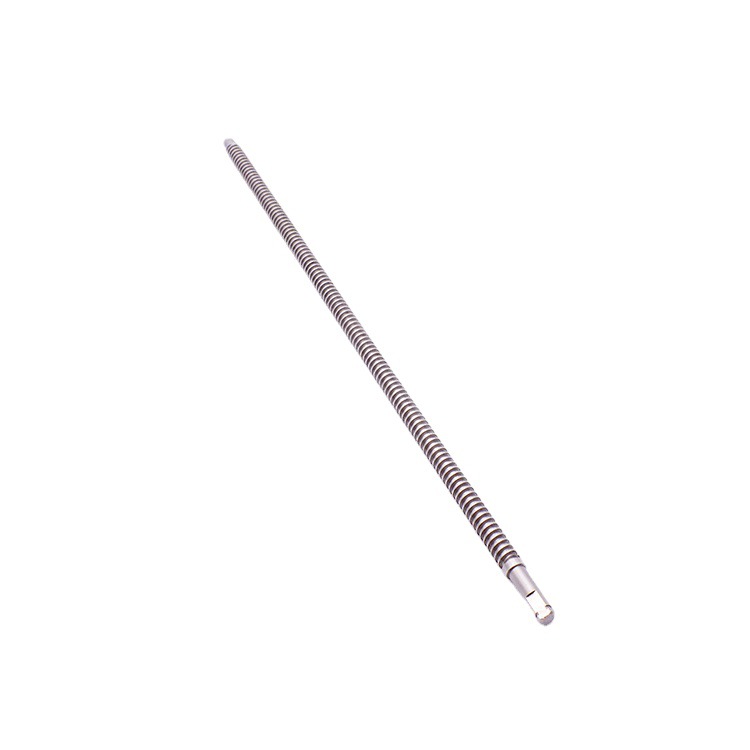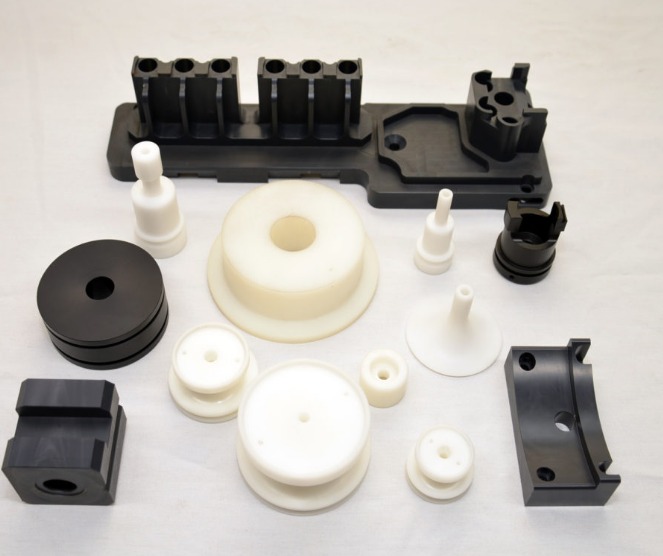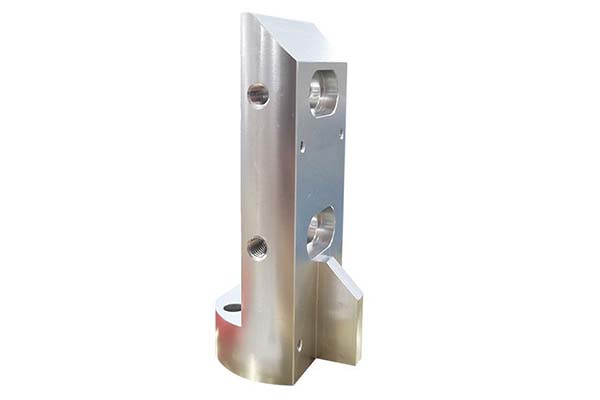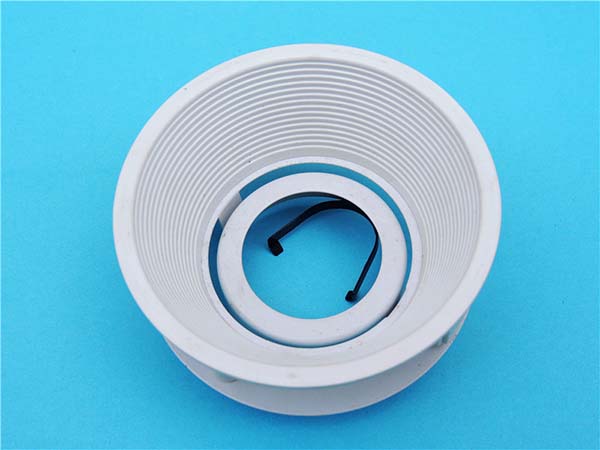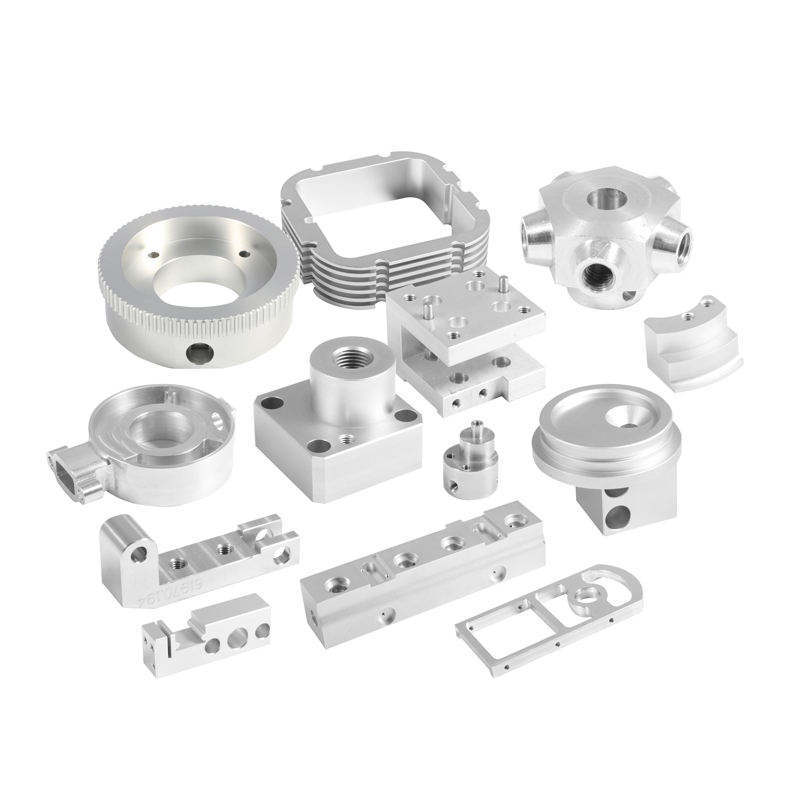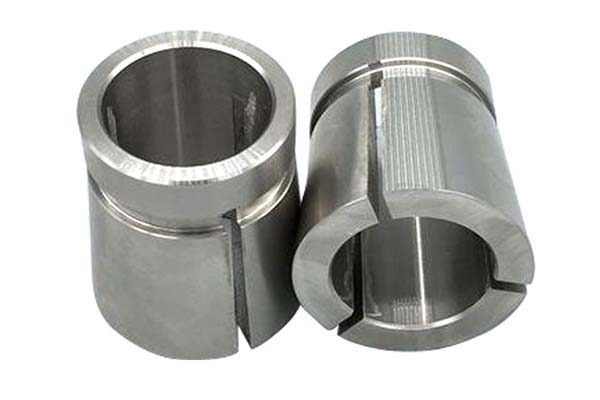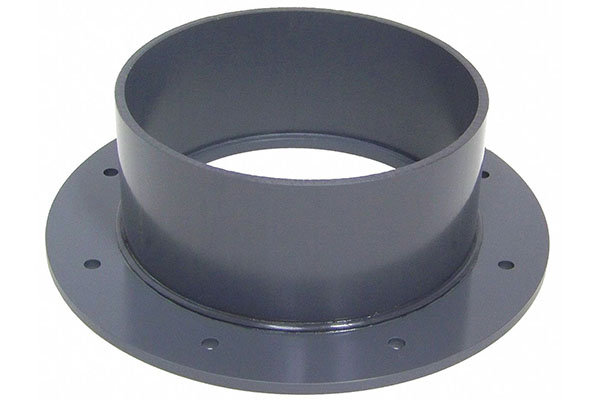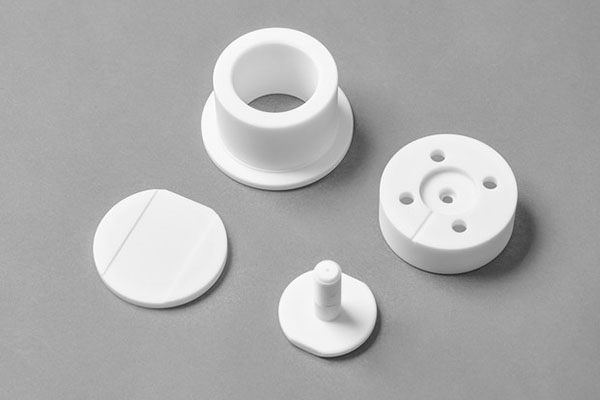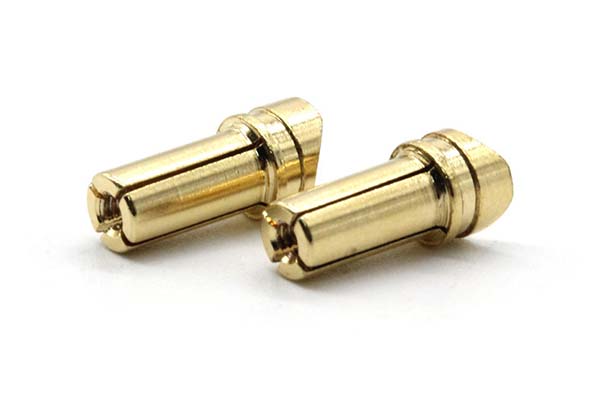1. Introduction
In the dynamic realm of modern machining, CNC Precision Manufacturing stands as a cornerstone technology, revolutionizing the way components are crafted with an unprecedented level of exactitude. As industries across the board, from aerospace to medical devices, demand ever - more precise and complex parts, CNC precision manufacturing has emerged as the go - to solution.
Traditional machining methods often relied on the skill and dexterity of human operators, which, while remarkable, were inherently limited by human error, fatigue, and the physical constraints of manual operation. For instance, in the production of small, intricate parts for watches, manual machining might struggle to achieve the sub - millimeter tolerances required for smooth movement of the watch's internal mechanisms.
In contrast, CNC (Computer Numerical Control) precision manufacturing uses computer - controlled systems to automate and precisely execute machining operations. This technology has not only significantly enhanced the accuracy and repeatability of the machining process but has also opened up new possibilities for the creation of complex geometries that were once nearly impossible to achieve.
The importance of CNC precision manufacturing in modern machining cannot be overstated. It serves as the backbone for industries that require components with extreme precision. In the aerospace industry, for Yigu Technology example, a single component in an aircraft engine must be manufactured with such high precision that any deviation could potentially lead to catastrophic failure. Similarly, in the medical field, implants made through CNC precision manufacturing need to fit perfectly within the human body to ensure patient safety and effectiveness.
This article delves deep into the mechanisms, technologies, and real - world applications of CNC precision manufacturing, exploring how it shapes the exactitude of modern machining. By examining its principles, comparing it with traditional methods, and highlighting its diverse applications, Yigu Technology aim to provide a comprehensive understanding of this transformative technology.
3. Key Advantages of CNC Precision Manufacturing
3.1 High Precision
CNC precision manufacturing is renowned for its ability to achieve micron - level precision. In the aerospace industry, for Yigu Technology example, engine components such as turbine blades are manufactured with tolerances in the range of ±0.001 - 0.005 mm. This level of precision is crucial as even the slightest deviation can lead to imbalances in the engine, reducing its efficiency and potentially causing catastrophic failures during flight.
In the medical device industry, components for implants like hip replacements also require extreme precision. These implants need to fit perfectly within the human body to ensure proper functionality and patient comfort. CNC precision manufacturing allows for the production of such implants with a high degree of accuracy, reducing the risk of complications due to ill - fitting parts. A study by a leading medical research institution found that implants produced through CNC precision manufacturing had a 30% lower rate of revision surgeries compared to those made with less precise methods.
3.2 Consistency
When compared to traditional manual machining, CNC precision manufacturing excels in ensuring consistency. In traditional manual machining, the skill and fatigue level of the operator can cause variations in the dimensions and shape of the products. For instance, in the production of small metal parts for electronics, a manual machinist might produce parts with a size variance of up to ±0.1 mm.
In contrast, CNC machines, once programmed correctly, can produce parts with a consistent variance of within ±0.01 mm, regardless of the production volume. This consistency is vital for large - scale production. Consider an automotive manufacturer that needs to produce thousands of identical engine components. The use of CNC precision manufacturing ensures that each component fits together perfectly during assembly, reducing the likelihood of mechanical failures and improving the overall quality and reliability of the vehicles. A car manufacturer reported a 25% reduction in warranty claims related to engine components after switching to CNC - produced parts.
3.3 Automation
Automation is a core advantage of CNC precision manufacturing. CNC machines can operate continuously for long periods with minimal human intervention. Once the initial setup and programming are complete, the machine can execute a series of complex operations, such as milling, drilling, and turning, autonomously.
This reduces the risk of human error significantly. According to a study by the Manufacturing Institute, human error accounts for approximately 20 - 30% of defects in traditional manufacturing processes. In a CNC - based production line, this percentage can be reduced to less than 5%. Additionally, the continuous operation of CNC machines can lead to a substantial increase in production output. For Yigu Technology example, a small - scale manufacturing company that switched from manual machining to CNC machining saw a 50% increase in daily production volume while also reducing the need for a large workforce, thus saving on labor costs.
3.4 Flexibility
CNC systems offer remarkable flexibility. With just a simple change in the programming code, the machine can adapt to different product designs. This makes it ideal for small - batch, high - variety production. A custom - jewelry manufacturer, for instance, can use a CNC machine to create unique designs for each customer. By simply uploading a new design file, the CNC machine can produce intricate and detailed jewelry pieces that would be extremely difficult and time - consuming to create through traditional methods.
Moreover, in the prototyping phase of product development, CNC precision manufacturing allows for rapid changes to the design. A product design team can quickly iterate on their prototypes, making modifications to the design and having the new prototype produced in a short time. This accelerates the product development cycle, enabling companies to bring their products to market faster.
3.5 Safety
Safety is another significant advantage of CNC precision manufacturing. Since most of the operations are automated, workers are less likely to come into direct contact with dangerous machinery. In traditional machining, operators are often exposed to sharp tools, high - speed rotating parts, and potentially harmful cutting fluids.
In a CNC - equipped workshop, safety features such as enclosures, emergency stop systems, and automatic tool - changing mechanisms reduce the risk of accidents. For example, the enclosure around a CNC milling machine prevents the operator from accidentally touching the spinning cutter, and the emergency stop system can quickly halt the machine in case of any malfunctions. A safety analysis of manufacturing facilities showed that workplaces with a high - percentage of CNC machines had 40% fewer accidents related to machinery compared to those relying mainly on traditional machining methods.
4. Applications Across Industries
4.1 Aerospace
In the aerospace industry, the demand for components with extreme precision and consistency is non - negotiable. CNC precision manufacturing plays a pivotal role in the production of engine components such as turbine blades, compressor discs, and combustion chambers. For example, turbine blades are designed with complex airfoil shapes to optimize the efficiency of the engine. These blades are manufactured with tolerances as tight as ±0.001 - 0.005 mm. A deviation of even a few microns can lead to significant changes in the aerodynamic performance of the blade, reducing the engine's efficiency and potentially causing vibrations that could lead to engine failure.
CNC precision manufacturing also enables the production of lightweight yet strong aerospace - grade alloys for fuselage and wing structures. By precisely controlling the machining process, manufacturers can create intricate shapes and thin - walled structures that meet the strict weight and strength requirements of aircraft. This not only improves fuel efficiency but also enhances the overall performance and safety of the aircraft.
4.2 Automotive Manufacturing
The automotive industry benefits greatly from CNC precision manufacturing in multiple aspects. In the production of engine components like cylinder heads, crankshafts, and camshafts, CNC machines ensure high - precision machining. Cylinder heads, for instance, require precise drilling and milling operations to create the combustion chambers, intake and exhaust ports. The use of CNC precision manufacturing allows for consistent production of these components with tight tolerances, typically within ±0.05 - 0.1 mm. This results in better engine performance, reduced emissions, and improved fuel efficiency.
For car body structures, CNC - machined parts such as chassis components and body panels ensure a perfect fit during assembly. The high - precision manufacturing reduces the need for manual adjustments, speeds up the assembly process, and improves the overall structural integrity of the vehicle. In addition, CNC precision manufacturing is also used for creating intricate and ergonomic interior components like dashboard molds and seat frames, enhancing the comfort and aesthetics of the vehicle.
4.3 Medical Equipment
The medical equipment industry has stringent requirements for precision, especially in the manufacturing of surgical instruments and implants. Surgical instruments like forceps, scalpels, and endoscopes are made with extreme precision to ensure accurate and safe surgical procedures. CNC precision manufacturing allows for the production of sharp - edged scalpels with consistent blade thickness and edge sharpness. For example, a high - quality scalpel blade might have a thickness tolerance of ±0.01 - 0.03 mm, which is crucial for precise incisions during surgeries.
Implants, such as hip and knee replacements, need to be an exact match for the patient's anatomy. Using 3D scanning technology and CNC precision manufacturing, doctors can create patient - specific implants. These implants are manufactured with a high degree of accuracy, with dimensional tolerances often within ±0.1 - 0.2 mm. This ensures a proper fit within the patient's body, reduces the risk of implant rejection, and improves the long - term success rate of the surgery.
4.4 Mold Making
Mold making is another area where CNC precision manufacturing shines. Molds are used in various industries, from plastics manufacturing to metal casting. CNC machines can quickly and accurately create complex mold cavities and cores. For example, in the production of plastic injection molds for small electronic components, the mold cavities need to be extremely precise to ensure the consistent production of high - quality plastic parts.
CNC precision manufacturing allows for the production of molds with tight tolerances, typically within ±0.02 - 0.05 mm. This high precision reduces the need for post - machining operations on the molds, shortens the production cycle, and ultimately leads to cost savings. Additionally, the ability to create complex geometries using CNC machines enables the production of molds for unique and intricate product designs.
4.5 Furniture Manufacturing
In furniture manufacturing, CNC precision manufacturing has opened up new possibilities for design and production. It allows for the creation of complex and detailed furniture components that were once difficult or impossible to produce. For example, intricate wooden carvings on headboards or decorative metal parts on furniture legs can be accurately reproduced using CNC machines.
CNC precision manufacturing also ensures the consistency of furniture parts. When producing multiple pieces of the same furniture design, each component can be made with the same dimensions and quality, resulting in a more uniform and professional - looking product. This not only improves the aesthetic appeal of the furniture but also enhances its functionality, as precisely - made parts fit together better, providing greater stability and durability.
5. Comparing CNC with Traditional Machining
5.1 Accuracy Comparison
When it comes to accuracy, the difference between CNC precision manufacturing and traditional machining is stark. CNC machines are capable of achieving extremely tight tolerances. For Yigu Technology example, in high - end CNC milling, the dimensional tolerance can be maintained within ±0.001 - 0.005 mm for small to medium - sized components. In contrast, traditional manual milling might have a tolerance range of ±0.05 - 0.1 mm.
The following table clearly shows the accuracy comparison:
| Machining Method | Typical Dimensional Tolerance (mm) for Small Components | Tolerance for Complex Geometries |
| CNC Precision Manufacturing | ±0.001 - 0.005 | ±0.005 - 0.01 (even for complex shapes) |
| Traditional Machining | ±0.05 - 0.1 | ±0.1 - 0.2 (difficult to maintain tight tolerances for complex shapes) |
This high level of accuracy in CNC machining is crucial, especially in industries like aerospace and medical device manufacturing. In the production of micro - components for medical implants, a deviation of just a few microns can cause the implant to malfunction or not integrate properly with the body.
5.2 Efficiency Comparison
Efficiency is another area where CNC precision manufacturing outshines traditional machining. CNC machines can operate continuously with high - speed machining capabilities. For instance, in the production of automotive engine components, a CNC - equipped factory can produce 50 - 100 parts per hour, depending on the complexity of the part. A traditional machining setup, with manual operation and frequent tool changes, might only be able to produce 10 - 20 parts per hour.
The table below further illustrates the efficiency comparison in terms of production time and output:
| Machining Method | Production Time per Part (for a Medium - Complexity Automotive Component) | Output per 8 - hour Shift |
| CNC Precision Manufacturing | 3 - 5 minutes | 96 - 160 parts |
| Traditional Machining | 15 - 30 minutes | 16 - 32 parts |
Moreover, CNC machines can perform multiple operations in one setup, such as milling, drilling, and turning, without the need for re - clamping the workpiece. This significantly reduces the overall production time and increases the throughput.
5.3 Cost Analysis in the Long Run
While the initial investment in a CNC machine can be significantly higher than traditional machining equipment, a long - term cost analysis reveals that CNC precision manufacturing is more cost - effective. A high - quality CNC milling machine might cost \(50,000 - \)200,000, compared to a traditional milling machine that could be in the range of \(10,000 - \)50,000.
However, due to the high efficiency and precision of CNC machines, the cost per unit of production is lower in the long run. For example, in a large - scale production of 10,000 units of a metal component, the cost per unit with traditional machining might be \(10, considering labor, material waste, and equipment wear. With CNC machining, despite the higher initial equipment cost, the cost per unit can be reduced to \)6 due to higher productivity, lower material waste (around 10 - 20% less waste compared to traditional machining), and fewer rejects (a reduction of 30 - 50% in reject rates).
In addition, the reduced need for skilled labor in CNC machining (as the machines are automated) also contributes to long - term cost savings. Although CNC operators require training, the overall labor cost is lower compared to a workforce of highly skilled traditional machinists needed for the same production volume.
6. Conclusion
In Yigu Technology conclusion, CNC precision manufacturing has indelibly transformed the landscape of modern machining. Its significance is far - reaching, with implications that span across multiple industries and technological advancements.
The key advantages of CNC precision manufacturing, such as high precision, consistency, automation, flexibility, and safety, have made it an indispensable technology in modern manufacturing. The ability to achieve micron - level precision has enabled the production of components that are critical for high - tech industries like aerospace and medical devices. The consistency in production ensures product reliability, while automation has increased productivity and reduced human - error - related defects. The flexibility of CNC systems has opened up new possibilities for product design and rapid prototyping, and the enhanced safety features have made manufacturing environments safer for workers.
Across industries, from aerospace to furniture manufacturing, CNC precision manufacturing has found diverse applications. It has enabled the production of complex and high - quality components, improving the performance and quality of products in each sector. The comparison with traditional machining clearly shows that CNC precision manufacturing outperforms in terms of accuracy, efficiency, and long - term cost - effectiveness, despite the higher initial investment.
FAQs
Q1: What is the typical cost difference between a CNC - produced part and a traditionally - machined part in large - scale production?
A: In large - scale production, the cost per unit of a CNC - produced part is often lower. For example, in the production of 10,000 units of a metal component, the cost per unit with traditional machining might be \(10, considering labor, material waste, and equipment wear. With CNC machining, despite the higher initial equipment cost, the cost per unit can be reduced to \)6 due to higher productivity, lower material waste (around 10 - 20% less waste compared to traditional machining), and fewer rejects (a reduction of 30 - 50% in reject rates).
Q2: Can CNC precision manufacturing be used for small - batch production, or is it more suitable for large - scale production?
A: CNC precision manufacturing is highly suitable for small - batch production. Its flexibility allows for easy changes in programming, enabling the production of different designs with each batch. This is in contrast to traditional manufacturing methods that may require significant re - tooling for small - batch production. In small - batch production, CNC machines can quickly adapt to different product requirements, reducing production time and costs associated with setup and change - overs.
Q3: How does the learning curve for operating a CNC machine compare to traditional machining equipment?
A: Operating a CNC machine has a different learning curve compared to traditional machining equipment. While traditional machining often requires years of hands - on experience to master, CNC machine operation involves learning programming languages, CAD/CAM software, and understanding the operation of the computer - controlled system. However, once learned, CNC operation can be more consistent and less physically demanding. Training programs for CNC operators typically range from a few weeks to a few months, depending on the complexity of the machines and the level of expertise required.
